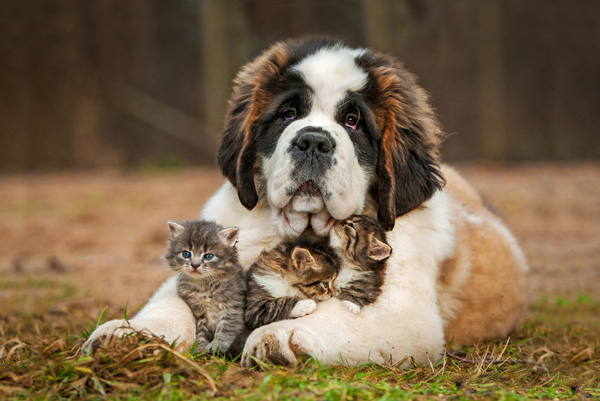Smog Makes Pets Sick
By Diane MacEachern on January 26, 2015

Many of us have kids whose asthma gets markedly worse when it’s smoggy outside. But I’ve noticed that bad air makes my pets sick, too. Until a few months ago I had a wonderful mutt named, Heaven. I still have a spunky cat named, Nike. Both of them struggled during the smoggy summer months, or anytime the air was particularly thick with car exhaust and emissions from power plants and other industrial sources.
That’s one of the reasons why I support MCAF’s efforts to get the EPA to strengthen the standards that limit our exposure to smog. Those same standards will protect my pets!
Like people, pets can develop a wide variety of chronic ailments when they breathe bad air — they wheeze and cough and find it difficult to breathe. I noticed with my own pooch that her energy levels went way down when I took her out on a smoggy day. Her head dropped, her tail flopped, and she had no zip in her trot whatsoever. It got to the point where, on days when air quality was particularly bad, I’d walk her as early in the morning as possible, skip the afternoon altogether, and not take her out again until the sun went down.
Veterinarians have been noting the negative impact polluted air has on dogs, cats, rabbits, birds and other pets for decades. Research backs them up.
As long ago as 1948, intense smog in Donora, Pennsylvania made at least 15% of the dogs in the community ill, with some dying. Two years later, in 1950, smog in Poza Rica, Mexico sickened many pets, especially canaries, 100% of which died. In Los Angeles in 1955, vets began linking air pollution to signs of ocular (related to eyes) and upper respiratory tract irritation among dogs and pet birds.
As recently as January 7, 2014, Utah’s Herald Extra reported that cats and small dogs are susceptible to allergies, bronchitis and other ailments exacerbated by poor air quality.
Utah County Resident Bobbie Echols said this about her cat Mia, “When the air is really bad, she coughs more.”
Meanwhile, various laboratories have tested the impact of exposure to sulfur dioxide, sulfuric acid, hydrogen sulfide, ozone and nitrogen dioxide – all components of smog –on dogs, cats, rabbits, mice and guinea pigs. Their findings? Smoggy air harms’ our small furry friends’ lungs, even to the point of causing hemorrhaging and death.
MCAF’s Ronnie Citron-Fink has noted that her own cat, reacts like Bobbie Echols’ Mia. “My cat can’t stop sneezing. Visitors find this beyond gross. I find this beyond gross. I’m pretty sure it’s feline asthma. Air pollution triggers asthma and other respiratory ailments in cats, just as it does in humans.”
Abbie Walston, an MCAF contributor, grew up on a farm, with horses, sheep, dogs, cats, calves, llamas, and even a pet deer named Bambi. “We’re animals, too, so we should realize that if the animals get sick from air pollution, so can we. Remember the “canary in the coal mine” that indicated to miners that the air was dangerous? Smaller animals who display sensitivities to toxins should be considered warning signs of the damaging human health effects. I personally choose to abide by the precautionary principle and avoid substances that are dangerous to smaller animals.”
The Clean Air Scientific Advisory Panel, an external advisory group of health scientists, told EPA that the ozone standard should be lowered to a range of 60-70 parts per billion (ppb). Instead, EPA proposed a range of 65-70 ppb for allowable levels of smog, despite the scientific evidence that kids’ lungs are appreciably harmed when they breathe smog at 60-65 ppb. That’s why Moms Clean Air Force joins many other health groups in support of an updated standard of 60 ppb, which will better protect children with asthma, the elderly, and other vulnerable groups. Please take a moment to sign the petition below and post to your Facebook page.
We all need cleaner air – and so do our pets!
The post Smog Makes Pets Sick appeared first on IAQnet Live Wire.






















